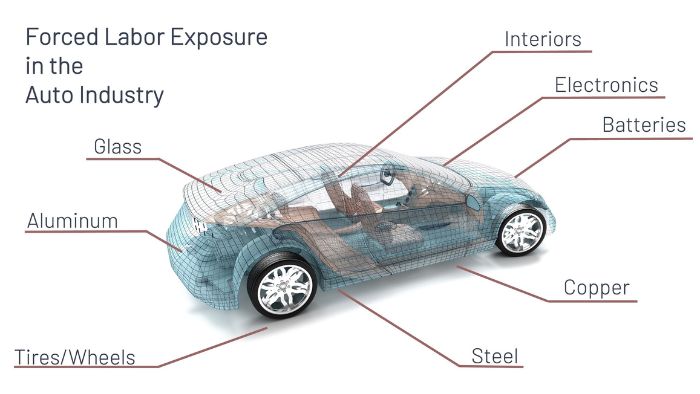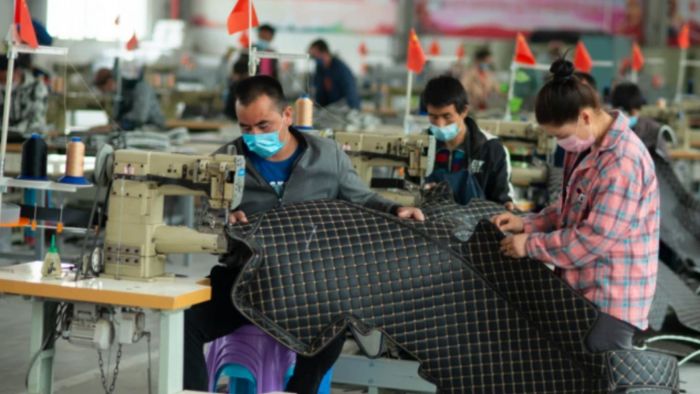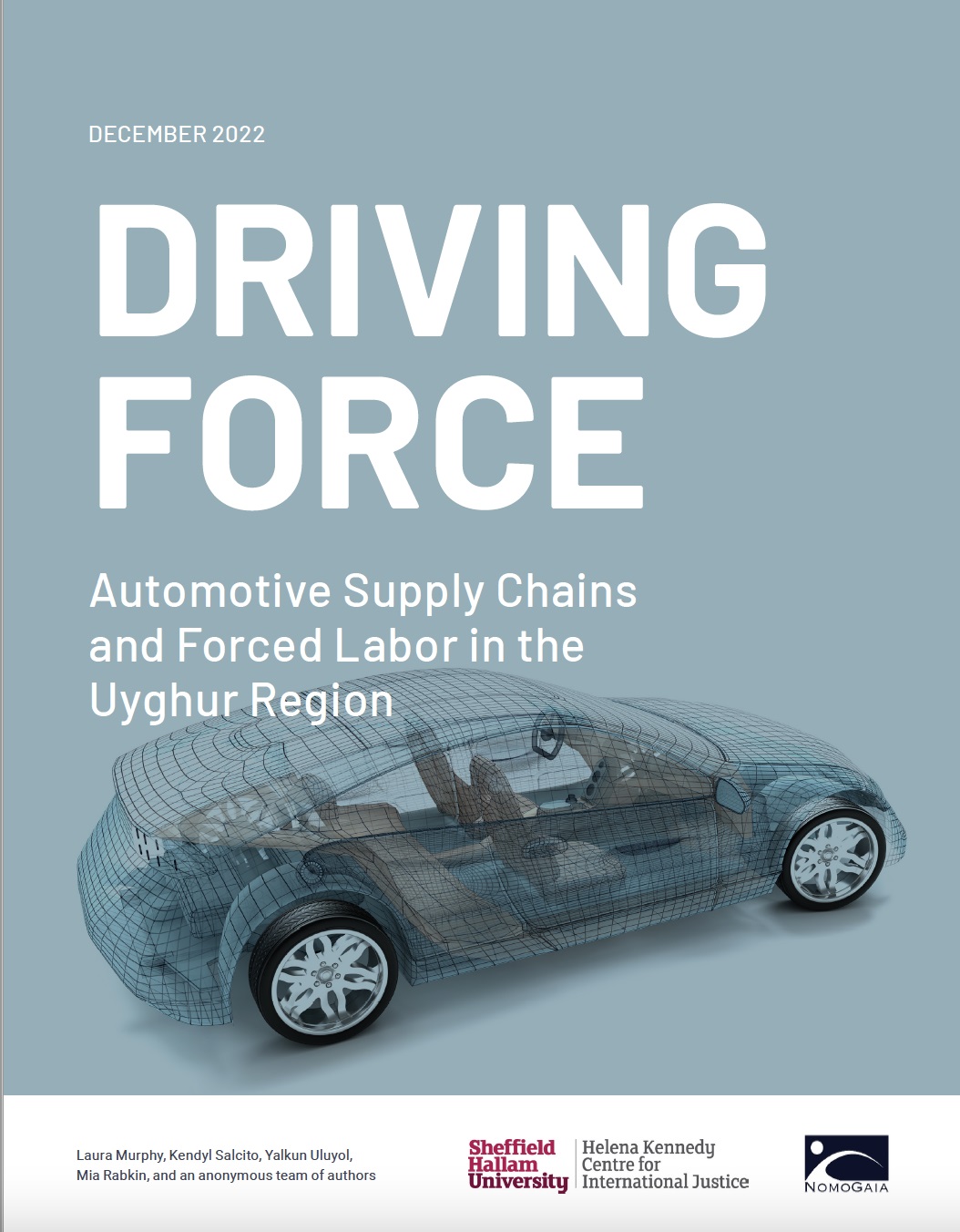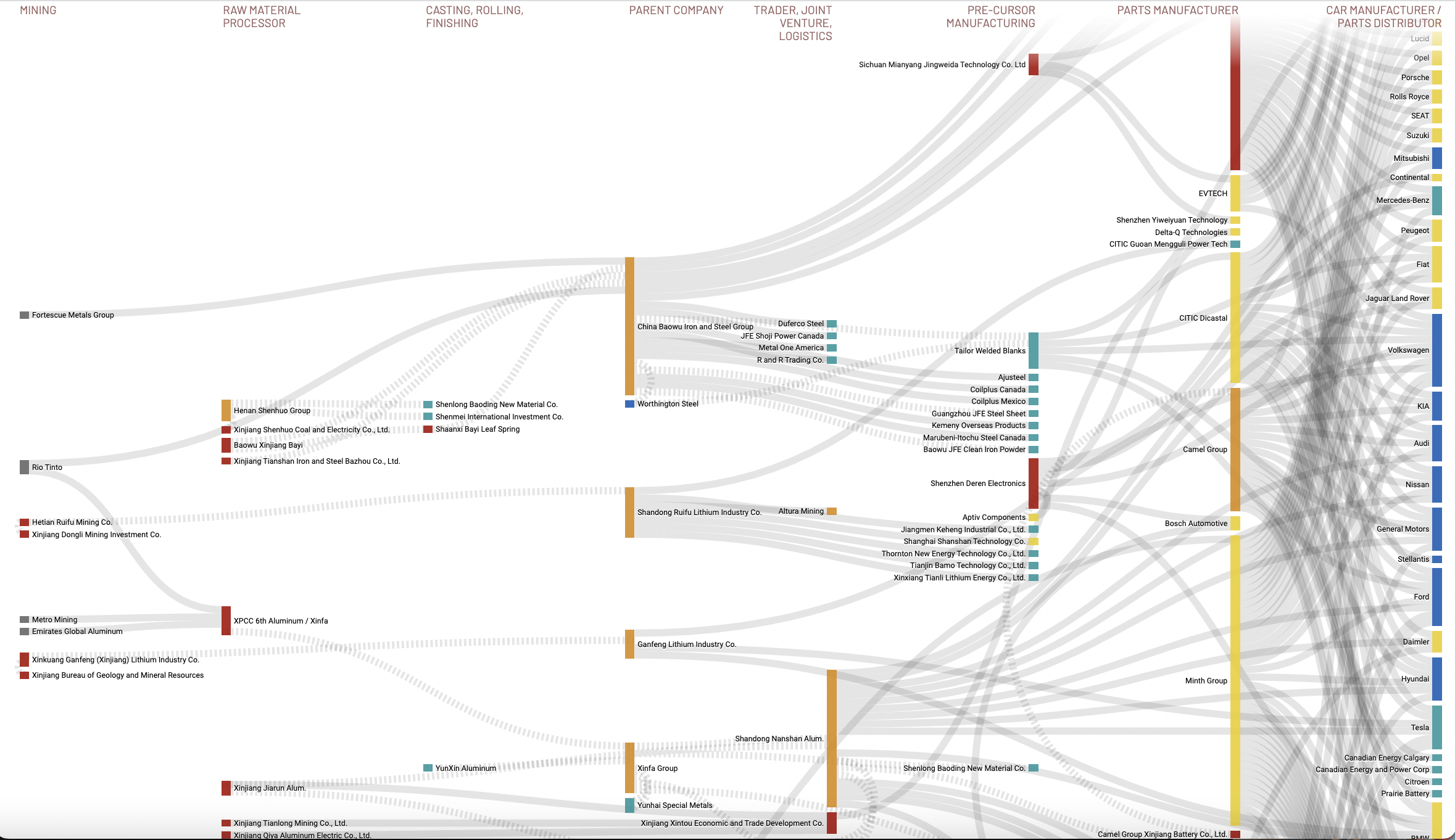Updated October 2024 to reflect a correction regarding Huizhou Desay SV Automotive Co., Ltd.
After review of the relevant statement in the report, it was found to be inaccurate and all mention of Huizhou Desay SV Automotive Co., Ltd. (惠州市德赛西威汽车电子股份有限公司) was removed from the report.
What parts of your car were made by Uyghur forced labourers?
If you have bought a car in the last five years, some of its parts were likely made by Uyghurs and others forced to work in China. The Chinese government has deliberately shifted raw materials mining and processing and auto parts manufacturing into the Xinjiang Uyghur Autonomous Region (XUAR or Uyghur Region), essentially making international supply chains captive to repressive programs and systematic forced labour.
In a six-month investigation undertaken by Laura T. Murphy, Kendyl Salcito, Yalkun Uluyol, Mia Rabkin, and a team of anonymous researchers, analysis of publicly available documents revealed massive and expanding links between western car brands and Uyghur abuses, in everything from the hood decals and car frames to engine casings, interiors and electronics.

Consumers do not want cars made through exploitation. But a combination of weak enforcement of forced labour laws and the government’s blind eye to environmental standards in China, paired with convoluted supply chains has left the automotive industry reliant on abusive suppliers. Every major car brand – including Volkswagen, BMW, Honda, Ford, GM, Mercedes-Benz, Toyota, Stellantis brands (like Fiat, Chrysler, Dodge and Jeep), Tesla and NIO - is at high risk of sourcing from companies linked to abuses in the Uyghur region. Some are sourcing electronics from firms that are employing trafficked Uyghurs in factories in other parts of China. Some are unwittingly sourcing metals from the Uyghur region, because metal trading companies own equity in Xinjiang smelters. Some of the greatest exposure comes from the steel and aluminum used to make car frames, axels, bodies, engine casings, wheels and brakes. The world’s largest steel and aluminum producers have shifted into the Uyghur Region under Chinese government subsidies and incentives. But tires, interiors, windshields, batteries and practically every other major part are also implicated.
The auto industry cannot wait another day to trace their supply chains back to the raw materials. To do anything short of full tracing would be an enormous legal, ethical, and reputational risk.
Read the full report (PDF, 4.3MB) to understand how the Uyghur Region has been transformed into the world’s forced labour capitol.
VISIT OUR INTERACTIVE AUTOMOTIVE SUPPLY CHAIN WEBSITE to search for any car company or sector to see how Uyghur forced labour is linked to international markets.
Evidence Base
Over the course of researching this report, HKC and Nomogaia collected troves of publicly available corporate reports, publicity videos, and other materials related to corporate engagement in the Uyghur Region. We archive the web-based content, but much of the videos and other materials in pdf format cannot be archived as easily. We share all of those materials here for the benefit of researchers and others interested in the evidence base.











